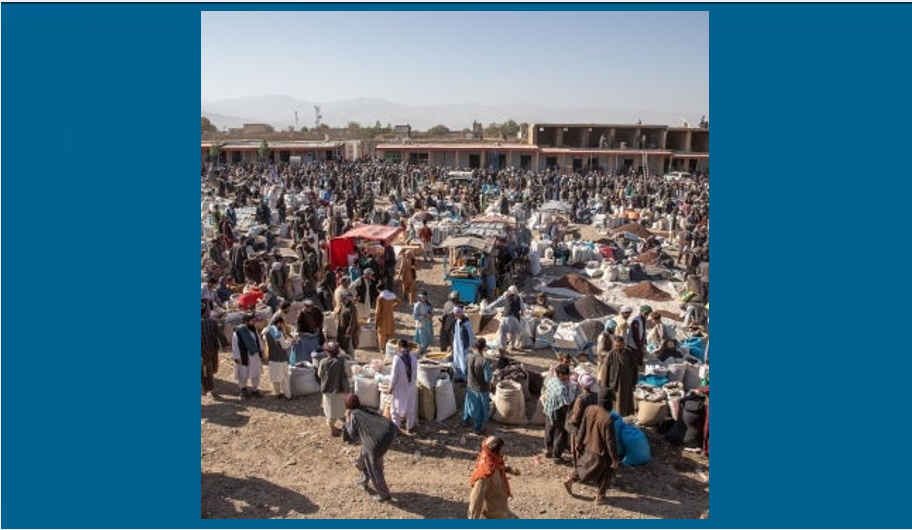The financial sector has been an important source of resilience throughout the war in Gaza – but the destruction has taken a toll. Eventual losses on credit portfolios alone are expected to reach USD 981 million. According to the World Bank, 98% of Gaza’s banking infrastructure has been affected: most bank and MFI branches are damaged or destroyed, only two of 98 ATMs remain, and reinsurance premiums have increased fivefold.
As a tentative cease-fire continues in Gaza, discussion among development funders is turning to reconstruction. The financial sector must be part of that conversation. The sector will play a critical role in helping households and small businesses recover in a situation where overall damage across sectors is estimated at USD 19 billion.
For example, well-functioning payment systems increase speed and reduce costs in aid disbursement. Accessible credit helps businesses restart and scale more quickly. Digital savings tools enable families to build buffers against future shocks. Investing in the financial sector recovery prevents unnecessary frictions and delays for other reconstruction efforts.
Three priorities for financial sector reconstruction
As funders consider options for Gaza reconstruction, three priorities should guide their financial sector support.
1) Rebuild financial institutions for long-term resilience
Supporting existing institutions to rebuild is faster and more cost-effective than starting anew. CGAP’s work in Lebanon shows that helping existing institutions is five times more cost-effective and 10 times faster compared to starting again. Gaza’s financial institutions face damaged infrastructure and weakened balance sheets – most of the pre-war Gaza portfolio (which reaches 30% of some banks’ portfolios) must be written off.
Yet recovery should also build for the future. Institutions have the opportunity to take advantage of new technologies and invest in lighter, more client-centered models – such as agent banking and offline digital services. The goal is not only to restore what was lost, but to deliver better value to clients.
2) Leverage the financial sector to support the reconstruction of the real economy
The financial sector has a key role to play in reconstruction by channeling funds to the real economy. Blended finance tools, such as loss-sharing arrangements for SME credit, can incentivize lending while managing the exposure for local financial institutions. In Gaza, where the need is immense, this support will likely also extend to grants. In markets like Lebanon and the Western Balkans, the financial sector was critical to managing the disbursement of reconstruction financing in the form of small grants and loans for individuals and businesses to rebuild livelihoods and invest for the future.
3) Address structural bottlenecks constraining the financial sector
Liquidity constraints remain one of Gaza’s biggest hurdles. With an acute shortage of physical currency in Gaza and a currency surplus in the West Bank, banks face both costly insurance and constraints on operations. At the same time, AML/CFT compliance risks and fragile correspondent banking links threaten to isolate the Palestinian financial system entirely. These challenges require coordinated support to stabilize liquidity, maintain cross-border flows, and safeguard trust in the sector.
Funders have an important role to play across these priorities. The need is great, and so is the imperative for funder coordination while supporting local capacity. Afghanistan’s experience offers lessons for how coordinated reconstruction can achieve longer-term resilience and economic growth.
Afghanistan’s approach to reconstruction: funder coordination and local capacity building from the start
In 2003, shortly after the end of the first Taliban regime, the Microfinance Investment Support Facility for Afghanistan (MISFA) was established as a local not-for-profit to support Afghanistan’s microfinance sector. MISFA was funded through the Afghanistan Reconstruction Trust Fund – a flexible, multi-donor mechanism that supported a range of efforts beyond financial inclusion, including health, education, and social safety nets.
Designed with CGAP support, MISFA helped to grow Afghanistan’s microfinance sector over the following decades. MISFA led the creation of the country’s first MFI network, helped coordinate sector financing, advocated for policy reforms, and provided technical assistance to local institutions. However, MISFA did more than aid the reconstruction of Afghanistan’s financial sector – it built local capacity that paid dividends in years to come.
When the U.S. military withdrew from Afghanistan in 2021, the country’s financial sector was once again thrown into crisis. Sharia law meant that only Islamic lending products would be permitted, and that existing portfolios would be uncollectable. At the same time, the sector had few places to turn for help. The international community and foreign investors had exited, while public sector capacity was near an all-time low. Yet, MISFA remained.
MISFA began working with the microfinance sector to help develop a solution. It began research on new models in Sharia-compliant lending, consulted with local actors, and presented proposals to the new government for what might work best in Afghanistan. By September 2022, MISFA had secured approval from the new government for microfinance institutions to resume lending. The microfinance sector had found a way to restart operations even as commercial banks struggled to find their footing.
Today, Afghanistan’s microfinance sector has rebooted. As of November 2025, the sector has 35,000 active clients (43% of whom are women) and is growing rapidly, with seven new microfinance institutions licensed just in 2025. The fast return to lending for the microfinance sector was only possible with the support of a strong local institution capable of navigating political transitions, remaining operational despite donor exits, and technically adept enough to help chart a course forward out of crisis.
A solution for Gaza – investing in local, coordinated financial sector capacity
The Afghanistan experience demonstrates what is possible when funders invest in local coordination mechanisms that outlast individual projects and political cycles. Such mechanisms need not focus only on microfinance; they can serve the broader financial sector. This experience holds lessons for Gaza.
Gaza’s financial sector reconstruction needs precisely this sort of institutional anchor—one that coordinates technical assistance, channels donor funding efficiently, invests in local expertise to weather future shocks, and helps shape a locally-owned, long-term agenda.
This is not to suggest that a solution for Gaza should be a copy/paste of MISFA, or any other country’s solution. Local realities must guide the effort. However, prioritizing local ownership, neutrality, and technical expertise is essential. The alternative is another cycle of fragmented efforts that will leave the financial sector vulnerable to the next crisis.



